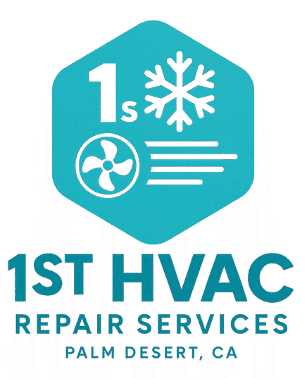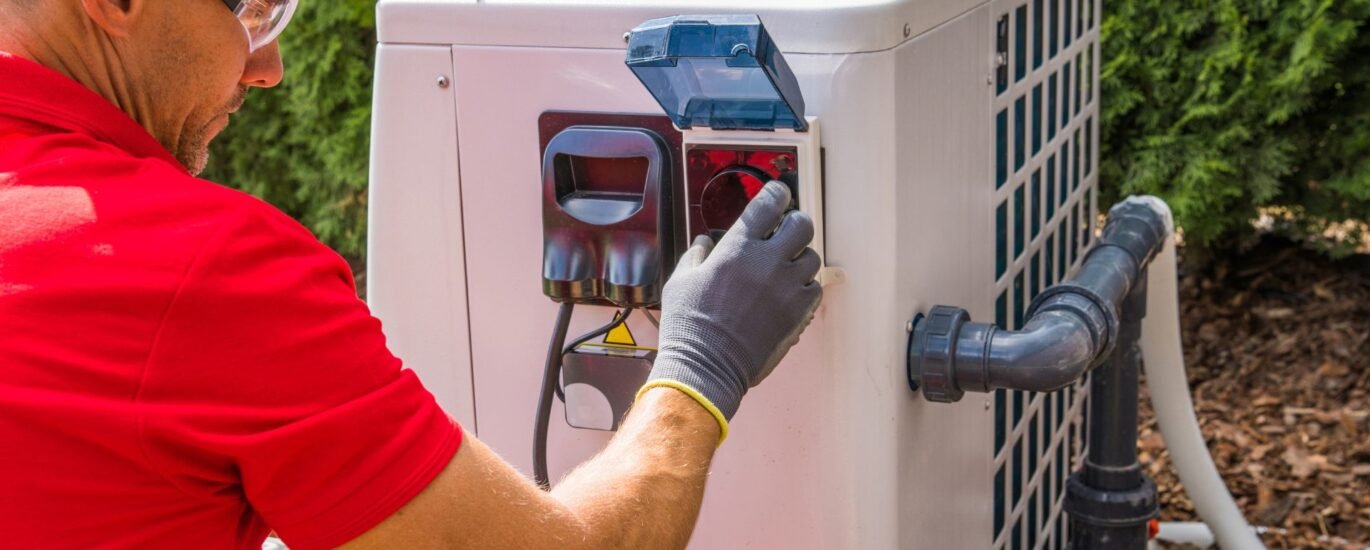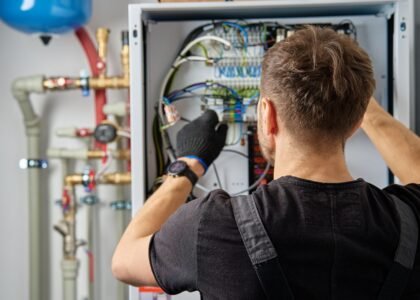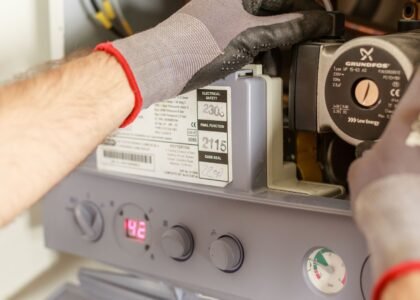When your heat pump isn’t working properly, your comfort (and your energy bills) can suffer fast. In this blog, we’ll walk you through everything you need to know about heat pump repair in Palm Desert, from common warning signs to what you can expect from the repair process — plus tips to keep your system running longer.
By the end, you’ll feel confident spotting issues early and knowing when to call in the pros. (And yes — our team is ready when you are.)
Why Heat Pump Repair Matters More Than You Think
A broken or inefficient heat pump doesn’t just make your home uncomfortable — it can:
- Drive up electricity bills
- Shorten the system’s lifespan
- Cause component failures
- Create indoor air quality or humidity issues
In Palm Desert’s climate, you rely on your heat pump year-round — cooling during scorching summers and providing warmth during cooler evenings. So prompt heat pump repair is key to keeping things steady and efficient.
Learn more about our approach on our heat pump repair page.
How a Heat Pump Actually Works
Understanding how your system works will help you spot problems early. Here’s a simplified breakdown:
- Heat transfer, not generation
- In cooling mode, the heat pump pulls heat from inside and dumps it outside.
- In heating mode, it reverses direction, drawing heat from the outside air (even when cool) into your home.
- Key components involved
- Outdoor unit: Contains the compressor, coils, fan
- Indoor air handler: Houses indoor coils, blower, filters
- Refrigerant lines: Connect indoor and outdoor coils
- Reversing valve: Switches the flow direction to change mode
When any one piece malfunctions — whether it’s a refrigerant leak, compressor issue, or airflow block — your system can suffer.
Common Signs Your Heat Pump Needs Repair
Catch issues early by staying alert to these red flags:
| Sign | Likely Causes | What to Do |
|---|---|---|
| Weak or inconsistent cooling/heating | Low refrigerant, faulty compressor, clogged coils | Call for diagnostic repair |
| Loud grinding, squealing, rattling | Worn motor bearings, loose parts, debris | Don’t ignore — unusual noises are often serious |
| Short cycling (turns on/off rapidly) | Over-sized unit, dirty filters, thermostat problems, refrigerant leaks | Get a pro to test the system |
| Sudden spike in energy bills | Degraded efficiency from dirt, leaks, or mechanical strain | Ask for efficiency assessment during repair |
| Outdoor unit freezing over | Defrost sensor error, airflow issues, low refrigerant | Let a technician inspect and thaw properly |
If you spot any of these, don’t delay — scheduling a repair now can prevent a full system breakdown later.
What Happens During a Professional Repair
Here’s a step-by-step view of how qualified technicians approach your heat pump repair:
1. Comprehensive diagnostic inspection
Technicians assess both indoor and outdoor units. They check:
- Electrical connections
- Refrigerant pressures and levels
- Compressor and motor operation
- Coils and airflow
- Thermostat signals
This diagnosis reveals root causes, not just symptoms.
2. Clear explanation and repair plan
Before doing any work, the technician will explain:
- What’s wrong
- Why it happened
- The repair options
- Estimated timeline
You’ll know exactly what’s going on before the repair starts.
3. Repair or replacement of faulty components
Work may include:
- Fixing refrigerant leaks
- Replacing a failing compressor or fan motor
- Repairing wiring or controls
- Cleaning or straightening coils
- Adjusting airflow or controls
Technicians use tools and parts suited to your specific heat pump model.
4. System testing and calibration
After repair, the system is tested for:
- Proper temperature differential
- Stable pressures
- Adequate airflow
- Safe electrical function
Only when all metrics check out is the system returned to you.
5. Maintenance advice & next steps
You’ll receive recommendations to keep your heat pump in good shape between service visits (which we’ll cover in the next section).
If you’d like us to come out, you can reach us any time via our contact page.
Maintenance Tips to Prevent Future Repairs
A little regular upkeep can help avoid major repair calls. Try these:
- Change or clean filters monthly
Dirty filters choke airflow and make your pump work harder. - Keep outdoor unit clear
Remove leaves, debris, and plants. Leave ~2 feet of open space. - Gently rinse the coil
Use a garden hose (not a pressure washer) to remove surface dirt. - Mind indoor airflow
Ensure vents aren’t blocked by furniture or curtains. - Schedule annual professional tune-ups
Technicians can clean indoor coils, check refrigerant levels, tighten connections, and spot hidden wear.
These practices keep your system efficient and reduce the chance of breakdowns.
Why Local Experience Matters for Heat Pump Repair in Palm Desert CA
Repairs aren’t one-size-fits-all. You want a repair provider who knows:
- How heat pumps perform in desert climates
- Local electrical and building conditions
- Best practices for cooling/defrost cycles in this region
A company focused on heat pump repair in Palm Desert, CA can spot issues that generic HVAC services may overlook.
FAQs About Heat Pump Repair
How long does a typical repair take?
It depends on the issue. Simple repairs (e.g. replacing a capacitor or fixing a small leak) might take a couple of hours. More complex repairs (compressor swap, major refrigerant work) may require more time or an additional visit.
Is it better to repair or replace an old system?
If your heat pump is over 10–15 years old, has repeated breakdowns, or efficiency is very low, replacement may be more cost-effective in the long run. A technician can help you run a cost comparison during the diagnostic.
Can I use my system during the repair?
Minimal use is possible depending on the issue, but it’s safest to leave operation to the technician, especially with refrigerant or electrical repairs.
How do I schedule repair service?
You can contact us any time via our Contact Us page. We’ll work with your schedule to dispatch a qualified technician as soon as possible.
Summary & Next Steps
Your heat pump is one of the most important systems in your home — for both heating and cooling. Paying attention to early warning signs and scheduling prompt repairs can save you from discomfort and high costs later.
- Watch for warning signs like odd noises, short cycling, or ice buildup
- Choose a repair service familiar with Palm Desert’s climate
- Perform basic maintenance yourself while scheduling yearly tune-ups
- Contact a pro when signs arise — don’t wait until a small issue becomes a bigger problem
When you’re ready to restore your system to full strength, you can always return to our heat pump repair service page or reach out through our Contact Us page to get started.
Your comfort is too important to leave to chance — and timely repair can make all the difference.
::contentReference[oaicite:0]{index=0}



